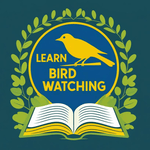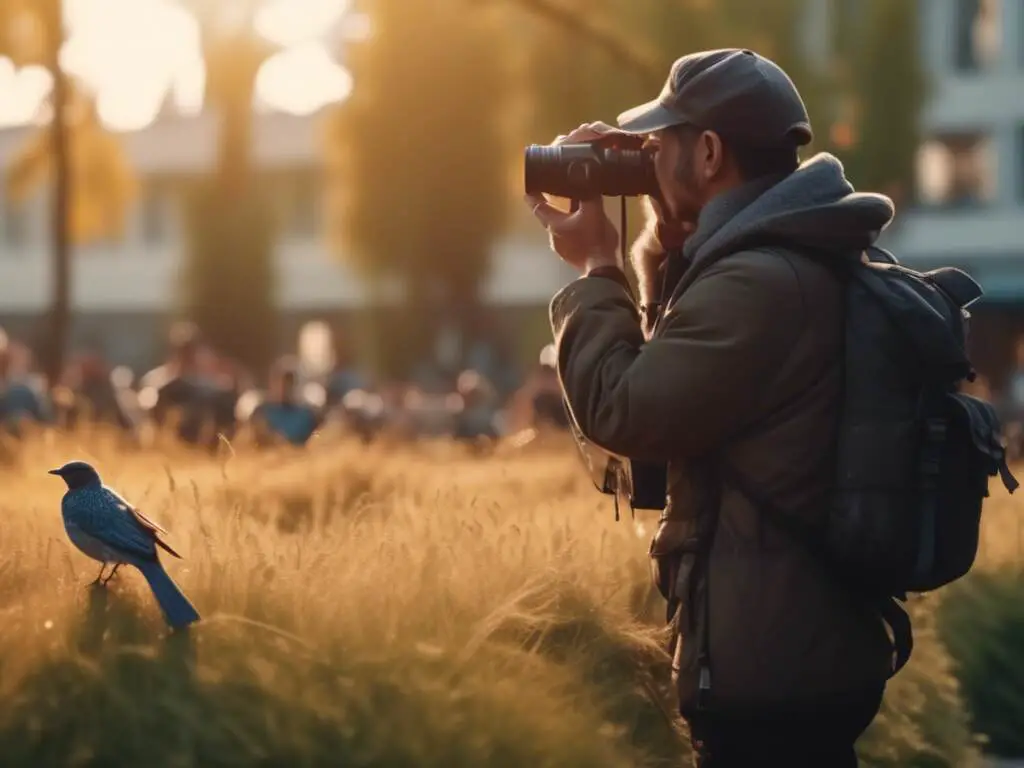Have you ever wondered how many people bird watch? You might be surprised to learn that a whopping 96 million Americans participated in birdwatching in 2022! From casual backyard enthusiasts to serious birders traveling the world, this hobby is rapidly growing.
Birdwatching offers people of all ages the chance to connect with nature, relax, and enjoy the beauty of wildlife. In this article, we’ll explore just how popular birdwatching is today and what makes it such a rewarding pastime.
Table of Contents
How Many People Bird Watch?
United States: A Nation of Birdwatchers
- Over 96 Million Birdwatchers in 2022
Recent surveys reveal that more than 96 million Americans aged 16 and older engaged in birdwatching activities in 2022, marking a significant increase from previous years. This means that over a third of the adult population in the United States now identifies as birdwatchers, reflecting the hobby’s broad appeal. Birdwatching has become a common pastime not just in rural areas but also in cities and suburbs, with people finding creative ways to observe birds from their homes, workplaces, and local parks. - Backyard Birding Dominates
The overwhelming majority of American birders—about 88%—prefer to watch birds from the comfort of their own homes, often setting up feeders, birdbaths, and native plants to attract feathered visitors. Meanwhile, an impressive 40% of enthusiasts are willing to travel more than a mile from home to seek out new species and unique habitats, demonstrating the hobby’s capacity to inspire adventure and exploration.
Global Trends: Birdwatching Boom Worldwide
- Pandemic-Fueled Growth
The global birdwatching community experienced explosive growth during the COVID-19 pandemic, as people sought safe and meaningful ways to spend time outdoors. Digital platforms like eBird saw their user bases more than double in over two dozen countries, with participation rates skyrocketing in places as diverse as Nicaragua, Vanuatu, and Ukraine. This surge reflects a newfound appreciation for local wildlife and the restorative power of nature. - Europe and Beyond
Birdwatching enjoys immense popularity in Europe, especially in the United Kingdom, where it has outpaced traditional pastimes like fishing. Countries such as the Netherlands, Germany, Sweden, Italy, and Spain have also seen a rise in birding activities, with organized tours and festivals drawing enthusiasts from across the continent. In Canada, birdwatching has become so popular that it now surpasses gardening as a favorite leisure activity, highlighting its widespread appeal.
Birdwatching by the Numbers: Key Statistics
| Country/Region | Estimated Participation Rate | Notable Trends |
|---|---|---|
| United States | 35% of adults (96M+) | Major growth since 2020 |
| United Kingdom | ~9% of total population | More popular than fishing |
| Canada | High | Surpassed gardening in popularity |
| Netherlands/Germany | High | Leading in European bird tourism |
| Global (eBird users) | Doubled in 26 countries | Pandemic-driven surge |
Birdwatching statistics paint a vivid picture of a hobby that is both accessible and deeply engaging. In the United States, over a third of adults are involved, making birdwatching one of the most popular nature-based activities. The United Kingdom’s birding community is robust, with millions participating in local bird counts and conservation efforts.
Canada’s birders have helped the country become a leader in citizen science, while European nations like the Netherlands and Germany are renowned for their bird tourism industries. Globally, the rapid rise in eBird users signals a growing, interconnected community of bird enthusiasts who share sightings and data, enriching our collective understanding of avian life.
Demographics: Who Is Birdwatching?
Age and Gender
Birdwatching has traditionally attracted an older demographic, but recent years have seen a notable influx of younger participants. The pandemic prompted many young adults and families to explore local parks and nature reserves, introducing a new generation to the joys of birding.
While women in North America have historically made up a slight majority of birders, the gender gap is narrowing as more men and non-binary individuals join the community. This shift is reshaping the culture of birdwatching, making it more inclusive and dynamic than ever before.
Diversity and Location
Despite its growing popularity, birdwatching in the United States remains less diverse than the general population. About 94% of American birders identify as white, with participation rates among African Americans, Asians, and Hispanics each below 10%. Native Americans, however, participate at the national average, reflecting a strong cultural connection to the land.
Birdwatching is also more prevalent in rural and small-town settings, where 28% of residents report engaging in the hobby, compared to 18% in major metropolitan areas. Northern states like Montana and Vermont lead the nation, with over 40% of their populations actively birdwatching, thanks to abundant natural habitats and a strong tradition of outdoor recreation.
Economic Impact of Birdwatching
- A $41 Billion Industry
Birdwatching is not just a beloved pastime, it’s a powerful economic engine. In the United States alone, the hobby generates more than $41 billion annually, supporting local businesses, conservation initiatives, and tourism. Birders purchase a wide array of products, from binoculars and field guides to birdseed and specialized clothing, fueling growth in outdoor retail sectors. - Wildlife Watching Drives Spending
The financial impact of birdwatching extends far beyond equipment sales. In 2022, wildlife watchers, most of whom are birders, spent over $250 billion on travel, lodging, and related activities. The average birder invests upwards of $2,188 each year in pursuit of their passion, whether traveling to remote birding hotspots or enhancing their backyard habitats. - Ecotourism and Local Economies
Birdwatching tourism can provide a significant boost to local economies, especially when rare or unusual species are spotted. When a Steller’s Sea-Eagle made a rare appearance in New England, it attracted thousands of visitors and generated over $750,000 in economic activity for the region. Such events highlight the broader benefits of birdwatching, from job creation to increased support for conservation efforts.
Why Is Birdwatching Growing?
Pandemic and Mental Health
The COVID-19 pandemic fundamentally altered how people interact with the natural world. With indoor activities restricted, millions turned to birdwatching as a safe, accessible way to relieve stress and improve mental health. The simple act of observing birds provided comfort, a sense of wonder, and a daily connection to the rhythms of nature, helping individuals cope with uncertainty and isolation.
Technology and Citizen Science
Advancements in technology have revolutionized birdwatching, making it easier and more rewarding than ever. Apps like Merlin Bird ID and platforms such as eBird allow users to identify species, log sightings, and contribute to global scientific databases. The user-friendly nature of these tools has attracted a more diverse audience, including tech-savvy young people and families. Citizen science initiatives empower birders to play a direct role in conservation, turning a personal hobby into a collective effort to protect wildlife.
Shifting Demographics
Younger generations are increasingly embracing birdwatching, drawn by its blend of adventure, relaxation, and environmental stewardship. Social media platforms have amplified the hobby’s appeal, with birders sharing photos, stories, and tips online. As awareness of climate change and biodiversity loss grows, more people see birdwatching as a way to connect with and advocate for the natural world. This demographic shift is infusing the birdwatching community with fresh energy, creativity, and a renewed sense of purpose.
Frequently Asked Questions
How Many People Bird Watch Worldwide?
While it’s challenging to provide an exact global figure, it’s clear that birdwatching is practiced by millions across continents. Participation rates are highest in North America and Europe, but the hobby is rapidly gaining ground in Asia, Africa, and Latin America. The recent surge in digital engagement and citizen science projects suggests that birdwatching is more popular and accessible than ever, with new enthusiasts joining daily.
Is Birdwatching Still Growing?
Absolutely—every available metric indicates that birdwatching continues to expand. From rising membership in birding organizations to increased use of identification apps and record-breaking participation in bird counts, the hobby shows no signs of slowing down. This growth is fueled by a combination of technological innovation, environmental awareness, and a widespread desire for meaningful outdoor experiences.
What Is the Future of Birdwatching?
The future of birdwatching looks exceptionally bright. As more people discover the joys of observing birds, the hobby is likely to become even more inclusive and influential. Ongoing advances in technology will make bird identification and data sharing easier, while increased focus on conservation will ensure that birdwatchers play a vital role in protecting habitats and species. Birdwatching is poised to remain a cherished pastime and a powerful force for positive change in the years ahead.
Conclusion
Birdwatching has blossomed into a global movement that transcends age, geography, and background. With over 96 million Americans and countless millions more worldwide taking part, it’s clear that the hobby offers something for everyone—whether it’s a peaceful moment in the backyard or an adventurous trek through wild landscapes.
Birdwatching fosters a deeper connection to nature, supports local economies, and unites people in a shared appreciation for the beauty and diversity of the avian world. As society continues to seek balance, well-being, and purpose, birdwatching stands out as a meaningful way to engage with the world around us.




